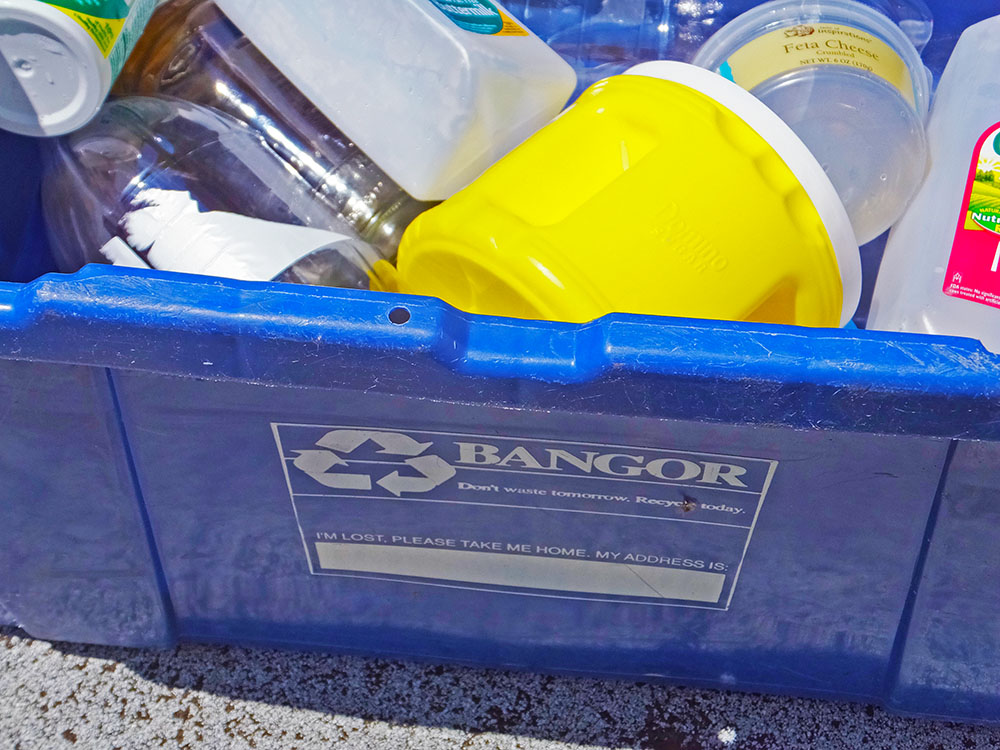Here’s why you need to wash your recyclables

If you are a good steward of the Earth and conscious of your waste stream, you probably make an effort to recycle. And that’s good news for the Earth, which could use more people recycling: though about 75 percent of American waste is recyclable, only about 30 percent is recycled.
However, even if you toss that yogurt container in your recycling bin, it may not make it through the whole recycling process.
Most recycled material collected in the United States is purchased by companies overseas to be processed into new materials for resale. China, formerly the primary purchaser of recycled materials from the United States, has recently banned recycled materials that are over half a percent contaminated with unrecyclable grease and gunk, leaving thousands of tons of recycled material languishing in landfills.
“It places a tremendous burden on the washing equipment at recycling facilities if the containers aren’t sufficiently empty,” said Susan V. Collins, president of the Container Recycling Institute, a non-profit recycling research, education and advocacy group based in Culver City, California.
An argument for rinsing
Recycled containers, especially recycled food containers, need to be rinsed before they are added to the recyclables waste stream for several reasons. For starters, it costs the recycling agencies more to buy dirty containers.
“Food waste in the containers also requires the recycler to over-pay for the materials they buy, since they purchase recyclables on the basis of weight,” Collins added. “It adds insult to injury to force recyclers to pay to essentially purchase trash.”
Unwashed recyclables can not only muck up the processing machinery, but they can confuse the sorting mechanisms aid in the recycling process.
“We have a machine that sees the chemical composition of [recycled bottles] and blows a little puff of air to sort it into right side,” said Matt Grondin, communications manager at ecomaine, a non-profit waste management organization based in Portland, Maine. “If it’s filled, the air won’t be strong enough to get it over.”
Once sorted, recycled materials are bundled and stored — sometimes even outdoors — for quite a while before they are sold and shipped off to be processed. Remnants of food could cause mold growth or attract bugs and other critters to the recyclables, which will make them less attractive to potential buyers.
“A lot of recyclables will be sitting in a place for a while because they end up at a processor,” said Megan Pryor, environmental specialist at the Maine Department of Environmental Protection. “If there’s food or remnants of other materials, you could have a situation where they’re moldy.”
Dirty recycled materials can also compromise the quality of the other recycled materials they are stored with.
“The oils from food especially can really wreak havoc of the fiber material like paper or cardboard,” Grondin said. “We don’t want getting into the stream.”
Some recycling organizations like ecomaine have access to a waste energy plant that will incinerate the soiled recyclables into energy, but many will relegate the unsellable and unusable recyclables to the landfill.
How to properly wash recyclables
Washing recyclables does not have to be a labor or resource-intensive process.
“Our practice is empty and clean-ish, but not spotless,” Grondin said. “Giving it a quick water bath and a shake — that’s the kind of clean that we want.”
Grondin said that water-soluble materials like soap and detergent will end up rinsing out in the water bath or burning off when they smelt the metal when they are recycled and do not necessarily need to be washed. In fact, according to How2Recycle, a labeling program for recyclable packaging, residual soap will clean the plastics during reprocessing.
Containers filled with sticky materials — jelly, honey or ketchup, to name a few — may require a little extra cleaning, but there is no need to break out the dish soap and scrubbing pad.
“If you can picture a jar of mayonnaise or peanut butter, at the end of the day, we want it mostly gone,” Gronodin said. “We can’t have the jar half full, for example. Take a knife or spoon and clean out as much of you can out of the bottom of the jar and give it a rinse or a shake.”
Beverage containers will also benefit from a quick rinse.
“If you have a beverage can that had a sugary drink in it, definitely be sure to empty it out [and rinse with] a little drop of water,” Pryor added.
Too dirty to recycle
There are some materials, however, that are too soiled to recycle.
“Heavily soiled pizza boxes are the biggest one,” Grondin said. He also said to leave out greasy paper plates and paper boats used for french fries or onion rings. Oily, dressing-doused paper clamshell salad containers should be thrown away, while plastic clamshell containers can easily be rinsed and added to the recycling bin.
Grondin cautioned eco-enthusiasts from overcorrecting on cleaning their recyclables, though.
“We really want people to focus on getting as much as they can out, but not going overboard,” Grondin said. “The carbon footprint of running the dishwasher for a few peanut butter jars or sour cream containers is overkill, frankly.”
